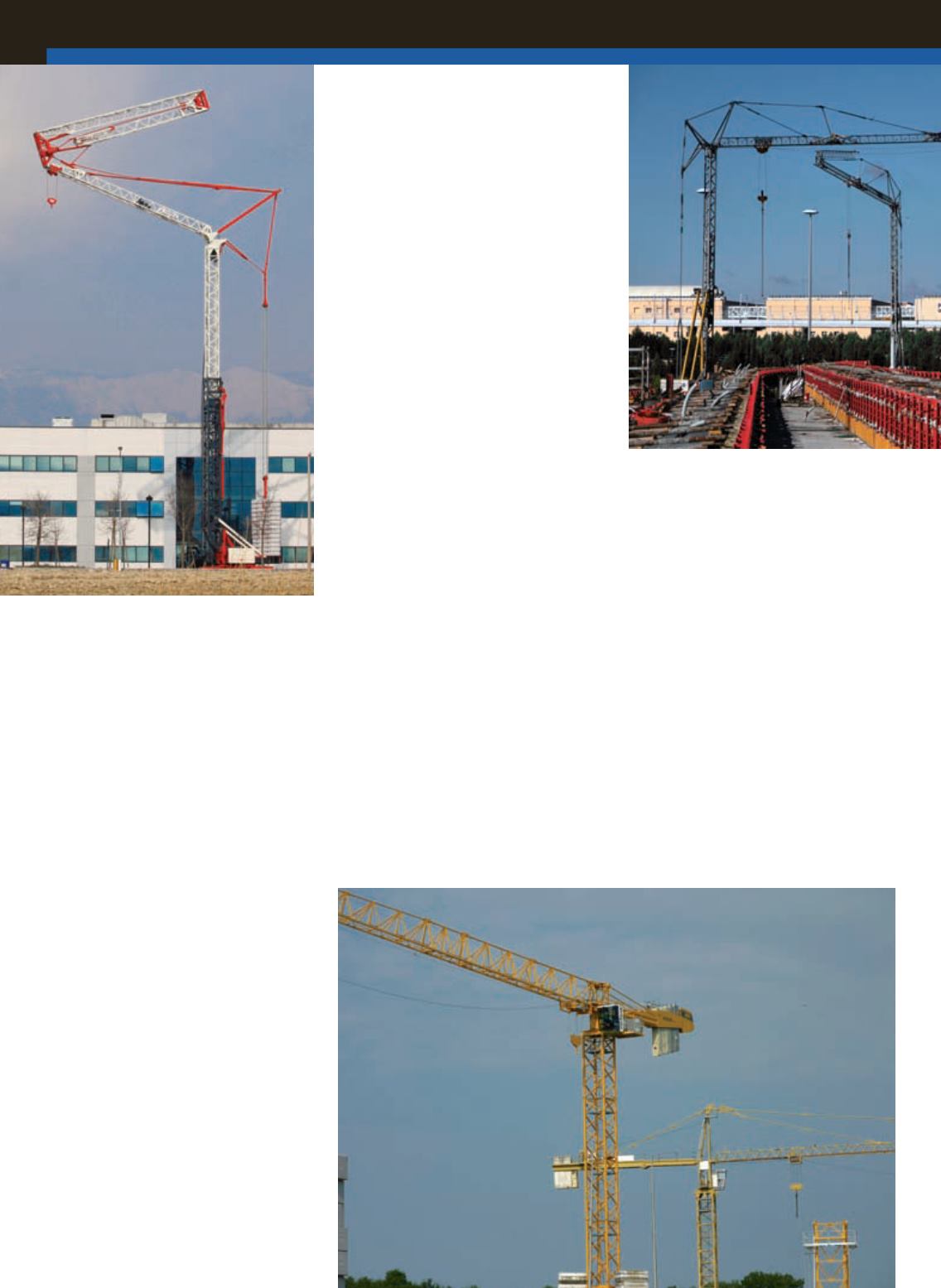
30
ACT
OCTOBER 2013
PRODUCT FOCUS
SELF-ERECTING TOWER CRANES
self-erecting tower cranes higher than
other general construction rental items,”
says Mike Reddick, vice president of sales
for Compass Equipment. “Last year was
a good year for Compass Equipment and
we included expansion into Colorado. We
continue to expand our reach into other
regional markets.”
Reddick says the company’s primary
markets are in medium to large urban
centers where demand is currently high.
For Compass, self-erecting cranes are also
popular in resort areas for condominiums,
large custom homes and hotels.
“Resort area work is increasing but has
been a slower recovery than the multi-
family work in large cities,” he says. “We
are experiencing an increase in inquiries
regarding upcoming projects at Colorado
ski resorts and we anticipate an increase in
resort development in 2014.”
Compass Equipment expects the market
to improve in 2014 due to an increase in
planned projects and better marketing.
“Self-erecting cranes continue to gain
acceptance across a broad spectrum of
contractors and projects and Compass
Equipment works diligently to position
ourselves to meet the increase in demand,”
Reddick says. “We have seen an increase
in retail sales of self-erecting tower cranes
in 2013 indicating increased confidence
of contractors in both the product and the
economy.”
The same can be said for Eagle West in
regard to branching out and educating
customers; the company has historically
supplied self-erectors to multi-family
projects that were four stories or greater.
“Now, we are starting to see more
commercial and concrete projects,” Davey
says. “The knowledge and scope of self-
erecting cranes has expanded because of
the communication that’s happened within
the market.”
Educating the market
While self-erectors can offer a number of
solutions to lifting problems, renters can
often experience sticker-shock when it
comes to signing the papers.
“A telehandler might cost $2,300 a
month to rent,” Davey says. “But a self-
erect will be $3,800 to $6,000 a month.
When people see that cost, they don’t see
the correlation of saving money. Instead
they think, ‘This is costing me more per
month.’”
This is where educating the customer
comes in. Self-erecting cranes allow
companies to operate with a skeleton
crew; one to three people can do the work
of an entire team.
“The biggest challenge is educating the
customer,” Davey says. “The advantages of
having a self-erecting tower crane are the
labor savings and cycle time decreases and
how these affect the overall bottom line.”
Davey says self-erecting cranes vastly
reduce cycle times which means a greater
reduction in labor costs “which is a
decrease in overall costs and obviously
an increase in profitability,” he says. “For
framing, that’s huge. Everyone knows the
margins on multi-family framing are very,
very slim.”
Mega Cranes Ltd., another British
Columbia-based crane rental company,
has also seen an increase in demand for
self-erect cranes, but says pricing is down
25 percent compared to what it was in
2008.
“We feel the construction industry in
North America is understanding the cost
benefits of the self-erect crane and this
market will continue to grow,” says Kerry
Hawley, managing director of operations
for Mega Cranes. “If you take a look at the
growth of the self-erect market for the last
10 years it’s staggering considering most
people didn’t even know what a self-erect
crane was back then.”
But according to Manitowoc, which
manufactures the Potain brand of self-
erecting tower cranes, the market isn’t on
fire.
A Terex Eazy 90 self-erecting tower crane.
Manitowoc Potain tower cranes at
Bauma 2013 in Munich.


